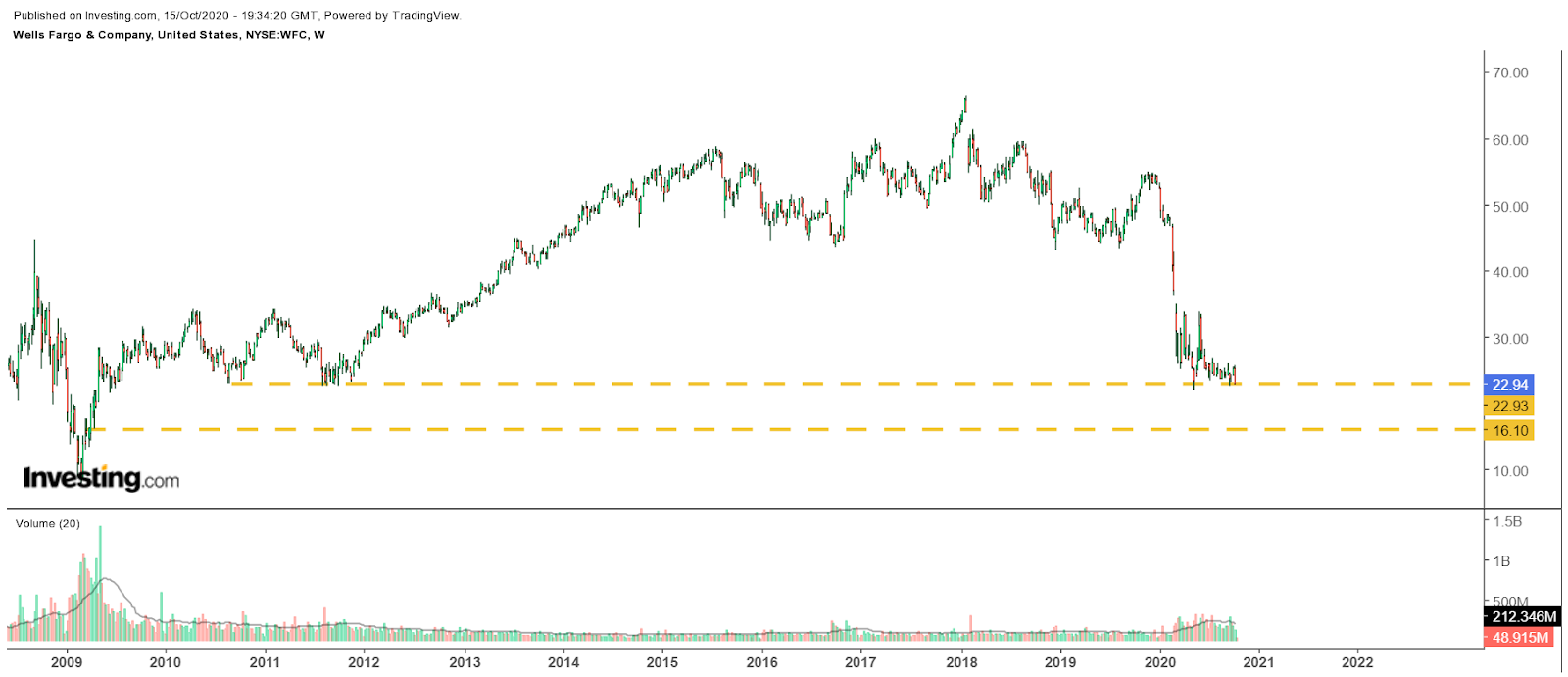This article was written exclusively for Investing.com
Since the middle of June, the banks have traded sideways, and that trend is not likely to change anytime soon. With inflation rates down and the Fed's pledge to keep interest rates low for the next few years, it seems that the banks could struggle. The low-interest-rate environment is likely to keep a lid on the bank's ability to generate extra revenue from net interest income.
Coupled with quarterly results and forward guidance, which appeared mixed at best, stocks like Wells Fargo, Bank of America, and Citigroup have fallen sharply. Even JPMorgan noted that net interest income would be pressured in 2021. It could result in the stocks falling even lower in the weeks ahead, based on technical analysis.
Interest rates are historically low. The Fed has noted in its latest projections that the Federal Funds rate would stay near-zero through 2023. It will make it harder for the banks to grow their net interest income revenue. One area where the banks could benefit is if interest rates spreads rise and fall. Still, even JPMorgan noted on its conference call that the net interest income was likely to fall to around $53 billion in 2021, from approximately $55 billion this year. Meanwhile, Wells Fargo saw a decline in net interest income in the third quarter of 19% year-over-year.
Wells Fargo
Wells Fargo (NYSE:WFC) is on the cusp of a very sharp decline should it not manage to hang on to technical support around $22.50. Currently, the stock is trading at its lowest price since March. Should the stock fall below support $22.50, it could result in the equity dropping to nearly $16.00

JPMorgan
Meanwhile, JPMorgan (NYSE:JPM) has also struggled to advance, but has fared better than Wells Fargo. Still, the shares have struggled to surpass resistance around $104. If the stock is unable to rise above $104, it may also be facing steeper losses, as it would be the third time it has failed at that price, resulting in a move back to $91.50.

Citigroup
Citigroup (NYSE:C) also noted that net interest income would decline in the fourth quarter, partially offset by non-interest revenue. Meanwhile, Citigroup's stock has also struggled. Now it is clinging to a level of technical support around $42.30. A drop below support would send the shares lower to about $39.25.

Bank of America
Finally, Bank of America (NYSE:BAC) does not seem to be in any better shape with a stock struggling below resistance at $26.25. Like the others, it faces a steeper loss if it cannot stabilize and stay above support at $23. A decline below that support price could result in the stock falling to around $21.30.

It may be a while before the group comes back to life, as the recent economic struggles from the coronavirus pandemic are keeping a lid on economic growth. With recovery still underway, it seems unclear as to when the market will begin to favor this group again.
Overall, in the absence of a revenue and earnings recovery, banks may only benefit should investors begin to focus on the future of the business and give the stock’s higher multiples. After all, the rest of the stock market has seen a tremendous amount of multiple expansion in 2020, why not the banks too.
